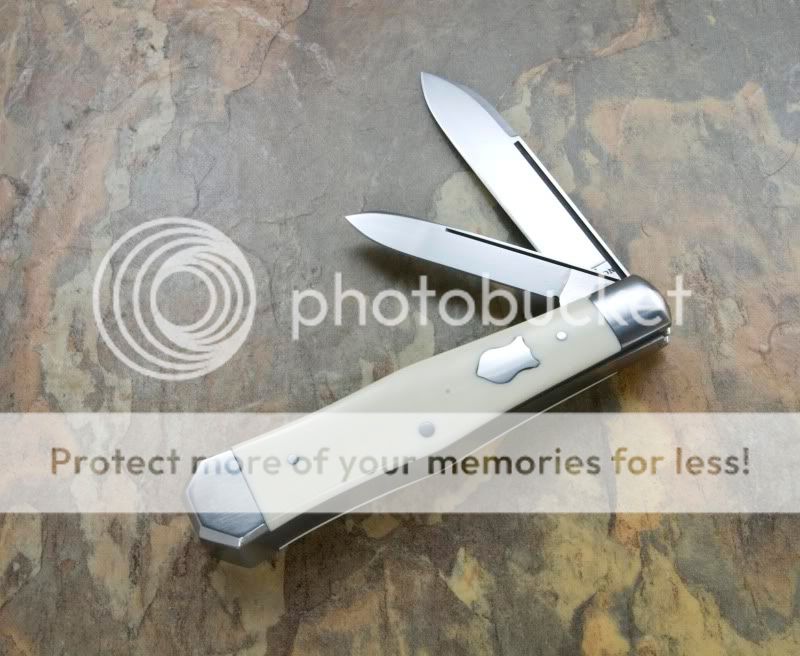black mamba
Gold Member
- Joined
- Oct 21, 2009
- Messages
- 22,770
While I am not overly critical of fit and finish issues, I do have definite preferences when it comes to design elements. In starting this discussion of nail nicks and pulls, I thought it important to outline different criteria for consideration, at least as I see them. Everyone is certainly encouraged to add anything else you think should be included. Different blades, to me, look better with specific types of nicks. What say you all?
1) Type (crescent, long pull, etc.)
2) Embellishment (color filled, match striker, etc.)
3) Placement (where on the blade)
4) Orientation (parallel to spine, swedge, handle, etc.)
5) Number (double pulls on same side of blade, or on both sides of blade)
My favorites are deep, blackened long pulls, parallel with the spine, running from the back of a cut swedge to the front of the tang. These work well on large, master blades, particularly spears, clips, drop points and speys. I have seen several examples in the "Old Knives" thread where the long pull runs all the way through the tang to the bolster. Even though historically accurate, I don't like the look.
If crescent nicks are used, they should either be parallel to the top edge of the blade, or to the top edge of the handle when closed. I'm not a fan of helter-skelter placement. I like crescent nicks on secondary, smaller blades.
Being right handed, I like my nicks on the side of the blade facing me when held in my left hand with the pivot to my right, i.e. stockmen with both clip and sheepfoot pulls on the mark side.
I don't care for double pulls, where the second one is near the tip and in the swedge. It spoils the looks and isn't necessary, anyway. Pulls on both sides of the blade might be interesting, though (would match nicely with Campbell's double shields).
OK, I'm done. You all jump right in, especially you knifemakers. Thanks, in advance.
1) Type (crescent, long pull, etc.)
2) Embellishment (color filled, match striker, etc.)
3) Placement (where on the blade)
4) Orientation (parallel to spine, swedge, handle, etc.)
5) Number (double pulls on same side of blade, or on both sides of blade)
My favorites are deep, blackened long pulls, parallel with the spine, running from the back of a cut swedge to the front of the tang. These work well on large, master blades, particularly spears, clips, drop points and speys. I have seen several examples in the "Old Knives" thread where the long pull runs all the way through the tang to the bolster. Even though historically accurate, I don't like the look.
If crescent nicks are used, they should either be parallel to the top edge of the blade, or to the top edge of the handle when closed. I'm not a fan of helter-skelter placement. I like crescent nicks on secondary, smaller blades.
Being right handed, I like my nicks on the side of the blade facing me when held in my left hand with the pivot to my right, i.e. stockmen with both clip and sheepfoot pulls on the mark side.
I don't care for double pulls, where the second one is near the tip and in the swedge. It spoils the looks and isn't necessary, anyway. Pulls on both sides of the blade might be interesting, though (would match nicely with Campbell's double shields).
OK, I'm done. You all jump right in, especially you knifemakers. Thanks, in advance.
















